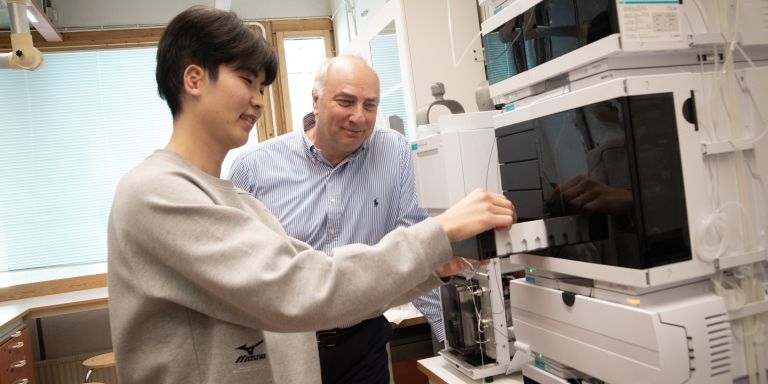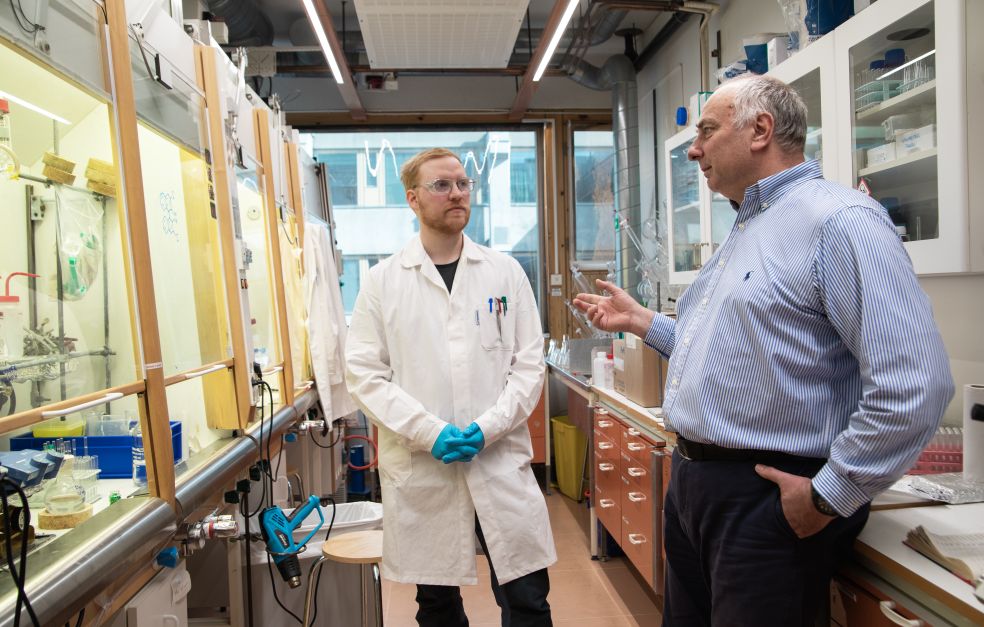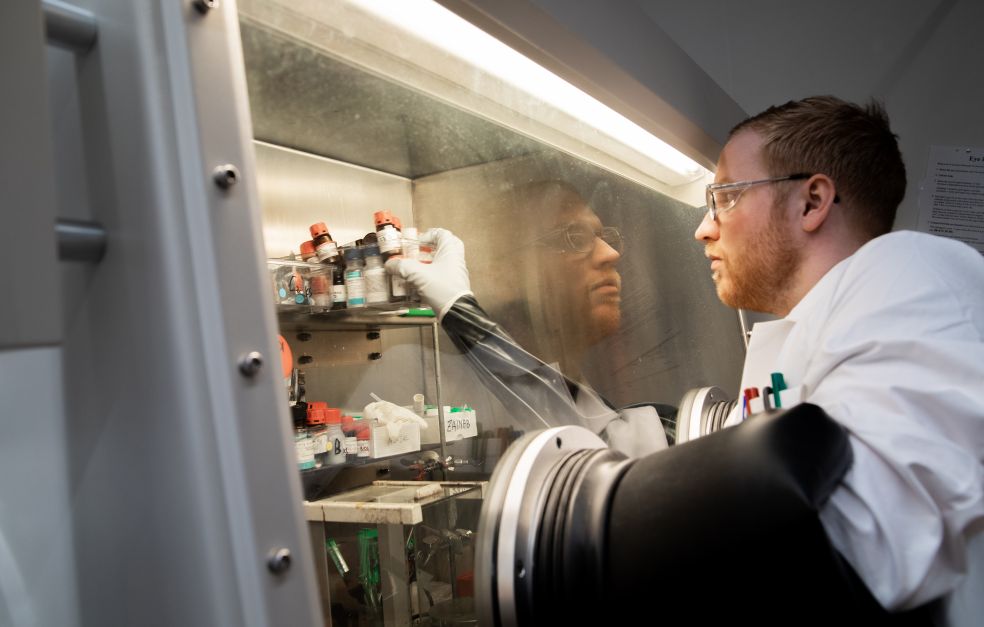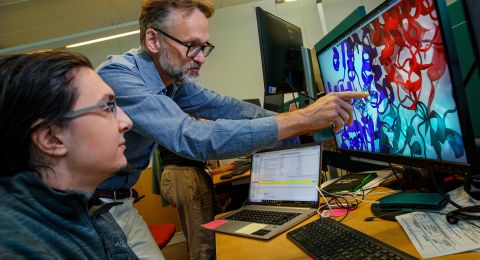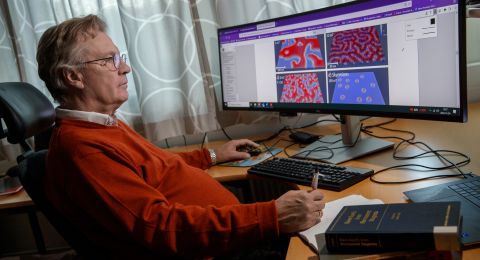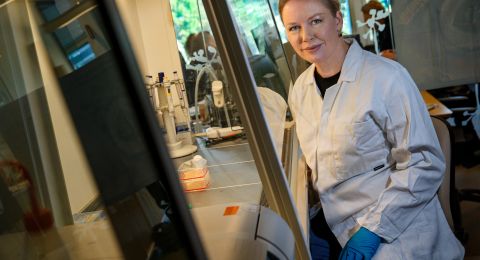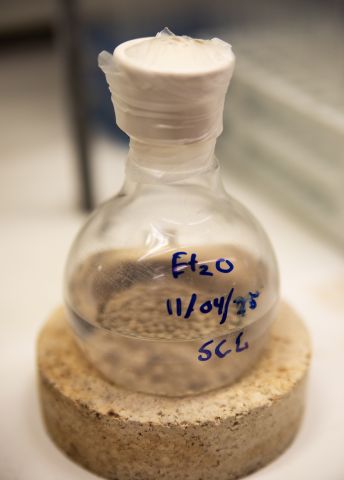
Project grant 2024
Chiral Geminal Diboronates: Unique Single-Carbon Linchpins for Expansion of the Chemical Space
Principal investigator:
Kálmán J. Szabó, Professor of Organic Chemistry
Co-investigators:
Stockholm University:
Fahmi Himo
Belén Martín-Matute
Uppsala University:
Máté Erdély
Institution:
Stockholm University
Grant:
SEK 35 million over five years
“We are working with boron compounds. It’s challenging but very exciting,” says Kálmán J. Szabó, professor of organic chemistry at Stockholm University, as he approaches a fume hood in which rows of test tubes containing a pale yellow liquid are lined up.
Szabó heads a project funded by Knut and Alice Wallenberg Foundation, with the aim of improving synthesis of boron containing compounds.
Boron is a metalloid. It is not found naturally in organic, i.e. carbon-based, molecules, but can be incorporated into them. Compounds with a carbon-boron bond acquire new, interesting chemical properties. Molecules with at least one such bond are called organoboranes.
“Organoboranes are important building blocks in the synthesis of other organic molecules, since they react easily and with a high degree of selectivity. They are also useful as pharmaceuticals and in new materials.”
The right form for the job
The researchers are developing a new method for synthesizing geminal diboronates, which contain not just one carbon-boron bond, but two, attached to the same carbon atom. The target compounds should also be chiral, meaning they exist in two forms that are mirror images of each other – like a right and left hand.
Molecules are usually formed in both chiral forms, but often only one is of interest. This is particularly true for drug molecules, since the different mirror-image forms may have completely different effects in the body, and in optoelectronic applications such as 3D-OLED displays, as the two forms interact with light in different ways.
An important requirement for the new method of synthesis is that it should produce significantly more of one mirror-image form than the other; it must be selective.
“At present it is difficult and expensive to produce chiral geminal diboronates with high selectivity, because effective and general synthetic methods are not available. We aim to change that,” says Szabó.
To do so, the researchers are using a method known as asymmetric organocatalysis, in which a chiral organic molecule acts as a catalyst forming primarily one of the mirror-image forms. In the target reaction the starting material is often an organic diboronic acid, and the catalyst is a variant of the chiral molecule BINOL. The diboronate is extended by a reaction called homologation, facilitated by the catalyst. The two carbon-boron bonds can then be replaced with other groups, resulting in a wide variety of new chiral substances.
“Chiral geminal diboronates can be used to build large libraries of substances, which can help finding new pharmaceuticals. Later in the project we plan to optimize the construction of such libraries using AI-driven synthesis planning,” says Szabó.
Destroyed by oxygen
But first, the primary reactions must function effectively, which presents its own challenges. The laboratory has an airtight cabinet (so called glove box) where researchers work using long gloves fitted through the front wall. The cabinet is filled with nitrogen gas to protect the boron compounds from atmospheric oxygen. Some of the compounds are also unstable at room temperature, and sometimes the two mirror-image forms can easily transform into one another during the reaction.
“The mechanisms for the synthesis and reactions of chiral boron compounds are complex and largely unexplored. We are investigating the conditions required for the reaction to yield the desired products, which are stable at ambient conditions.”
The project combines synthetic with mechanistic studies, with the aim of understanding how the reactions proceed. A quantum chemical computational method called density functional theory (DFT) is being used in a part of the project led by Fahmi Himo, professor of quantum chemistry at Stockholm University.
“This method enables us to calculate the potential energy surfaces of the reactions to determine which are the most likely pathways. We then attempt to adjust the synthesis accordingly,” says Szabó.
The mechanisms are also being studied using NMR spectroscopy, which provides experimental data on how the atoms in a molecule are arranged and which intermediates form during synthesis. This work is being led by Máté Erdélyi, professor of organic chemistry at Uppsala University.
Another important task is to find methods to reduce the amount of catalyst required. This is being investigated by a research team led by Belén Martín-Matute, professor of organic chemistry at Stockholm University, which is developing catalyst formulations and evaluating their activity.
The researchers recently achieved an important milestone. They succeeded to develop a new method for synthesis of a specific chiral geminal diboronate.
“We have been really pleased, since it shows that our hypothesis works. We now intend to expand the new method to include compounds with several other functional groups, and to achieve higher selectivity,” says Szabó.
Text Sara Nilsson
Translation Maxwell Arding
Photo Åsa Wallin
